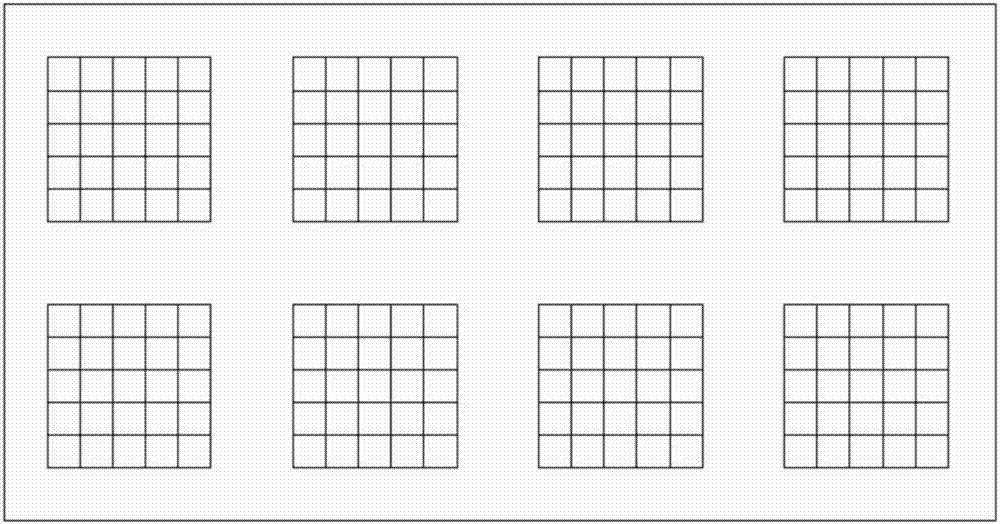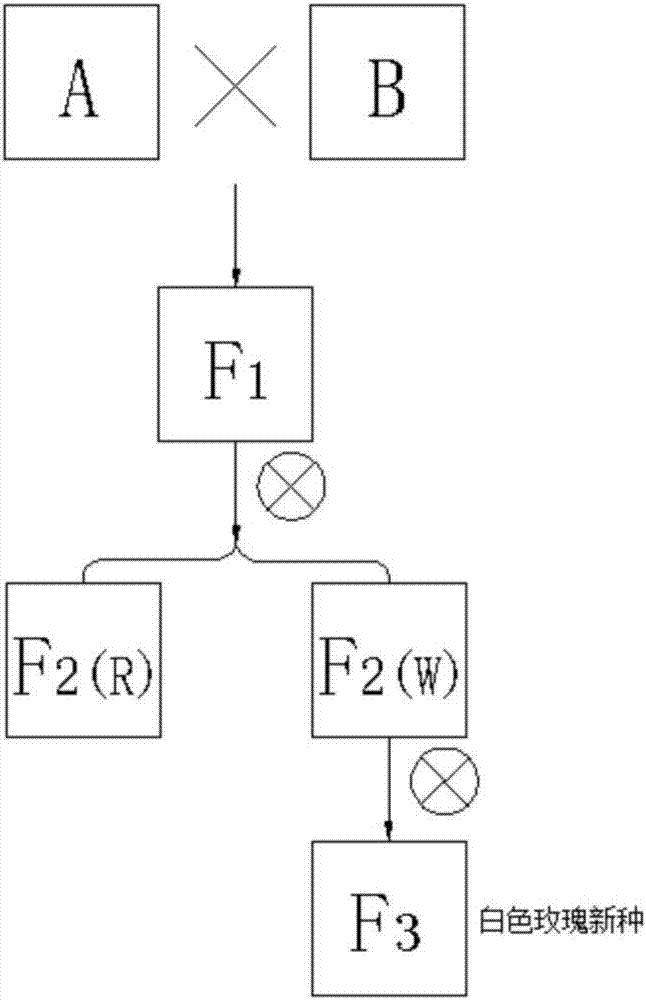A kind of method for cultivating rose varieties by interspecific hybridization
一种玫瑰、品种的技术,应用在植物培育领域,能够解决影响杂交育种进程、品种特性不稳定、杂种出苗困难等问题,达到香味优雅纯正、抗旱抗寒抗盐碱改善、玫瑰绿叶持久的效果
- Summary
- Abstract
- Description
- Claims
- Application Information
AI Technical Summary
Problems solved by technology
Method used
Image
Examples
specific Embodiment
[0039] a. Establish an experimental field in Zibo, Shandong, select healthy parents with no disease and no pests, and carry out the male parent B line Baiyutang rose (Rosa multiflora Thunb.Var.Albo-plena Yü et Ku et al. ) artificial pollination. Carry out artificial daily management after hybridization, and collect good seed F 1 . In the second year, the hybridized seeds F 1 Sow seeds separately, compare and identify them, select better plants among them for selfing, and carry out manual daily management after selfing, and most of the plants produced are red in color. 2(R) , a small number of plants with white flowers F2(w), collect the plants F with white flowers 2(w) Seed. Cultivate white roses in the coming year F 2(w) , and then F again 2( w) Selfing. The white rose plant F3 with ideal flower leaf shape, plant flower yield, fragrance type, and resistance was selected, which was Zhongtian Rose No. 5 (Toprose No: 5). Describe the situation of the above-mentioned expe...
Embodiment 2
[0067] No. 5 Zhongtian Rose (ToproseNo:5) of embodiment 1 is carried out stress resistance experiment, specifically as follows:
[0068] Cold tolerance: Inner Mongolia Baotou Fruit Tree Research Institute was entrusted to plant 500 Zhongtian Rose No. 5 (Toprose No: 5) in Huangmo, Guyang County, for overwintering experiments. It is manifested that there are 10-20 cm strips at the top shoots of the common overwintering in the first year of planting, and no strips appear in the second year and thereafter. Through practice, in the second year of planting, water control and fertilizer saving measures are taken to prevent excessive growth of branches, so that they can fully form woody quality, and better solve the problem of safe overwintering at minus 38 ℃. The test results show that the average cold resistance index of Zhongtian Rose No. 5 is 0.4, the frostbite length of branches is less than 15%, and there is basically no frostbite.
[0069]Salt-alkali resistance: In cooperation...
Embodiment 3
[0078] The flowers of different rose varieties are extracted with steam distillation. The extraction process parameters are: liquid-to-solid ratio 4:1, distillation time 4h, distillation speed 200mL / h (distillate of 10% distillate volume per hour) ), the charging capacity is 75% of the distiller. The experimental results are shown in Table 3.
[0079] table 3
[0080]
[0081] From the data in Table 3, it can be seen that the rose balm oil rate of the present invention reaches 0.053, which is higher than the Damask rose with high oil at present.
[0082] The chemical composition was determined by capillary gas chromatography-mass spectrometry.
[0083] Instrument: GC / 7AG chromatograph (Shimadzu, Japan), analytical column: quartz capillary column, 50m×0.3m, column temperature 80-180°C, 2°C / min temperature program, vaporization temperature 240°C, carrier gas is N 2 , the carrier gas flow rate is 60mL / min, and the injection port temperature is 240°C. Mass spectromet...
PUM
 Login to View More
Login to View More Abstract
Description
Claims
Application Information
 Login to View More
Login to View More - R&D
- Intellectual Property
- Life Sciences
- Materials
- Tech Scout
- Unparalleled Data Quality
- Higher Quality Content
- 60% Fewer Hallucinations
Browse by: Latest US Patents, China's latest patents, Technical Efficacy Thesaurus, Application Domain, Technology Topic, Popular Technical Reports.
© 2025 PatSnap. All rights reserved.Legal|Privacy policy|Modern Slavery Act Transparency Statement|Sitemap|About US| Contact US: help@patsnap.com



